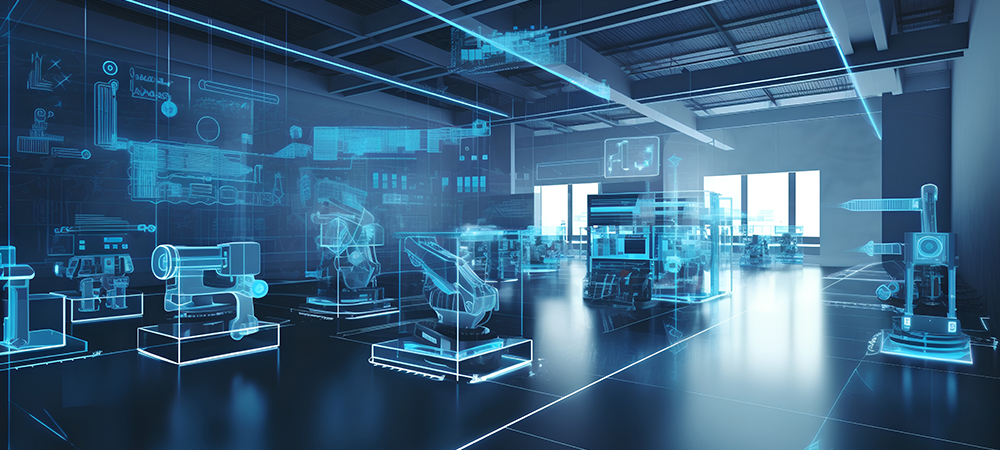Manuj Desai, CIO, STL, separates fact from fiction over smarter process.
Let me start with the basics, what exactly is industry 4.0 without being jargonish?
In simple terms, Industry 4.0 is about using technology to make manufacturing, supply chain and industrial processes smarter and more connected, so that businesses can make better use of data and improve productivity.
It is a way for companies to leverage the latest advancements in technology to stay competitive and meet the demands of an increasingly complex and fast-paced market.
We also know that Industry 4.0 technologies allow manufacturers to optimize their operations, reducing waste, managing quality, increasing productivity and so on and so forth.
For example, IoT sensors can monitor machines in real-time, enabling remote visual assessment which allows predictive maintenance to increase efficiencies.
And what better… The adoption of Industry 4.0 technologies can lead to significant improvements in organizational efficacy, resulting in lower OPEX (OPerational EXpense) for manufacturing companies.
But these words are thrown in reckless abandon many times with myths and misconceptions surrounding Industry 4.0. Let me debunk some common misconceptions.
1. One common myth about Industry 4.0 is that it will lead to widespread job losses and high unemployment rates. No, industry 4.0 won’t lead to job losses. In fact, it will create new job opportunities that require a highly skilled workforce to design, implement and maintain advanced technologies such as IoT, augmented reality and blockchain. Tata Steel is an example of a company that has adopted Industry 4.0 technologies and created new employment opportunities in robotics, data analytics and software development. They have also collaborated with universities to train the next generation of engineers and explore new Industry 4.0 technologies.
2. The second most widespread belief is that industry 4.0 is only for big businesses. Well the answer is a big resounding NO. Industry 4.0 technologies like IoT and cloud computing have made it more accessible and affordable for small and medium-sized businesses to adopt and benefit from them. Think of the burgeoning startup culture in India. Startups like Intugine demonstrate how Indian entrepreneurs are leveraging Industry 4.0 technologies to create new solutions and business models that address critical challenges and opportunities in various industries.
3. Many people believe that Industry 4.0 is all about automation and robots. While automation and robotics are an essential part of Industry 4.0, it’s not the only thing that Industry 4.0 entails. Industry 4.0 involves the convergence of the physical and digital worlds, enabling manufacturers to create new business models and revenue streams by offering services and solutions that are more personalized and responsive to customer needs.
4. Industry 4.0 is often seen as a futuristic concept that’s yet to be fully realized. However, many businesses are already implementing Industry 4.0 technologies to improve their operations, increase productivity and drive innovation. Think of companies like Tata Steel, Mahindra & Mahindra, STL, Godrej, Reliance and so many others.
Barcodes and QR codes are now ubiquitous and they have become a standard method of digitizing payments and tracking vehicles and shipments. In the agriculture industry, there has been significant investment in these technologies. The Telematics industry has also matured, with IoT devices now able to capture every parameter of every possible machine. Vision analytics, which uses camera vision to capture specific information, has emerged as a powerful tool.
The concept of a “Digital Twin” is now a reality. This refers to the creation of a virtual replica of a physical object, process or system, using advanced sensors, data analytics and modeling techniques. By creating a digital twin, it is possible to simulate and test various scenarios, predict outcomes, and optimize performance in real-time. Just think of it. If you can simulate how changes in production processes or equipment will affect the output, efficiency, and quality of the actual manufacturing system, it will allow you real-time adjustments and optimization, leading to increased productivity and cost savings.
Then there is Metaverse, taking the steps towards Industry 5.0 focusing on “experience” of the connected world; enabling observability for customer and employees providing an immersive, safe and virtual environment to be more flexible, productive and responsive towards changing markets.
The future is now. Technological advances and innovations that were once thought of as being in the distant future are already here and happening in the present.
Tomorrow is today! Let’s play our part in building the path to a digitized future.
Click below to share this article

